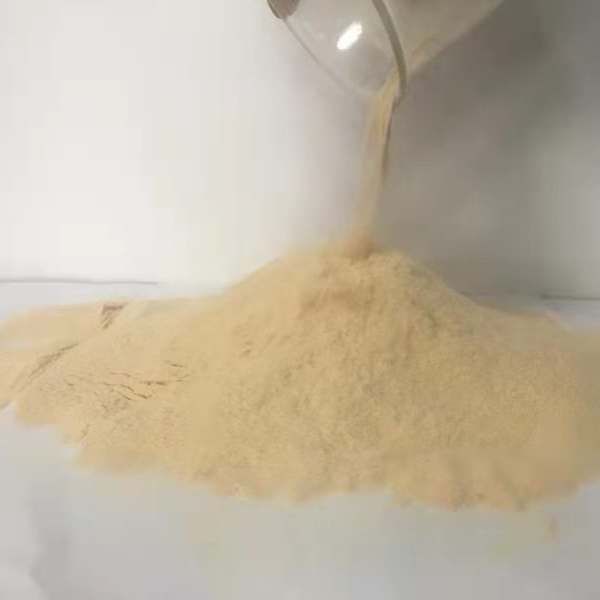
News
жнів . 21, 2024 06:44 Back to list
Exploring the Structure and Properties of Amino Acid-Based Polymers for Advanced Applications
The Structure of Amino Acid Polymers
Amino acids are the building blocks of life, essential for forming proteins and numerous biomolecules in living organisms. The structure of amino acid polymers, also known as polypeptides or proteins, is critical for understanding their function and roles in biological processes. This article explores the significance of amino acid polymers, their structural features, and the implications of these structures for protein function.
Basic Structure of Amino Acids
Amino acids share a common structure that consists of a central carbon atom (the alpha carbon), an amino group (-NH2), a carboxyl group (-COOH), a hydrogen atom, and a variable side chain or R-group that defines the character of each amino acid. There are 20 standard amino acids, and their diverse side chains contribute to the unique properties of proteins. These properties, such as hydrophobicity, charge, and size, influence how amino acids interact with one another and with other molecules.
Polymerization of Amino Acids
Amino acids link together via peptide bonds, forming long chains called polypeptides. This bond forms through a dehydration reaction between the carboxyl group of one amino acid and the amino group of another, releasing a molecule of water. The sequence of amino acids in a polypeptide is known as its primary structure, which dictates how the molecule will fold and function.
Levels of Protein Structure
The organization of amino acid polymers is categorized into four levels of structure primary, secondary, tertiary, and quaternary
.1. Primary Structure The linear sequence of amino acids determines the unique characteristics of the protein. This sequence is encoded by the corresponding genes and governs the folding and final structure of the protein.
amino acid polymer structure

2. Secondary Structure The primary structure can lead to local folding patterns, such as alpha helices and beta sheets. These structures are stabilized by hydrogen bonds between backbone amide and carbonyl groups, influencing the protein's overall shape.
3. Tertiary Structure The three-dimensional conformation of a protein arises from further folding and interactions among the side chains of amino acids. These interactions can include hydrogen bonding, ionic bonds, hydrophobic interactions, and van der Waals forces. The tertiary structure is critical as it determines the protein's active site and thus its functionality.
4. Quaternary Structure Some proteins consist of multiple polypeptide chains that come together to form a functional complex. The arrangement of these subunits, driven by the same interactions seen in tertiary structure, defines the quaternary structure. Hemoglobin is a classic example, composed of four polypeptide chains working synergistically to transport oxygen.
Implications of Structure for Function
The specific arrangement of amino acids and the resulting structures directly influence the function of proteins. Enzymes, for instance, rely on their active sites to bind substrates efficiently. The slightest alteration in the amino acid sequence can lead to significant changes in protein structure, impacting its activity and function, often with pathological consequences.
Moreover, the study of amino acid polymers extends to various fields, such as biotechnology and medicine, where understanding protein structure can lead to advancements in drug design, synthetic biology, and disease treatment.
Conclusion
Amino acid polymers represent a remarkable level of complexity, with their structures intricately linked to their functions in biological systems. Research into these polymers not only enhances our understanding of biological processes but also opens novel avenues for innovation in various scientific domains. The versatile nature of amino acids and their polymers underscores their foundational role in life, affirming the adage that structure indeed leads to function.
-
Polyaspartic Acid Salts in Agricultural Fertilizers: A Sustainable Solution
NewsJul.21,2025
-
OEM Chelating Agent Preservative Supplier & Manufacturer High-Quality Customized Solutions
NewsJul.08,2025
-
OEM Potassium Chelating Agent Manufacturer - Custom Potassium Oxalate & Citrate Solutions
NewsJul.08,2025
-
OEM Pentasodium DTPA Chelating Agent Supplier & Manufacturer High Purity & Cost-Effective Solutions
NewsJul.08,2025
-
High-Efficiency Chelated Trace Elements Fertilizer Bulk Supplier & Manufacturer Quotes
NewsJul.07,2025
-
High Quality K Formation for a Chelating Agent – Reliable Manufacturer & Supplier
NewsJul.07,2025
